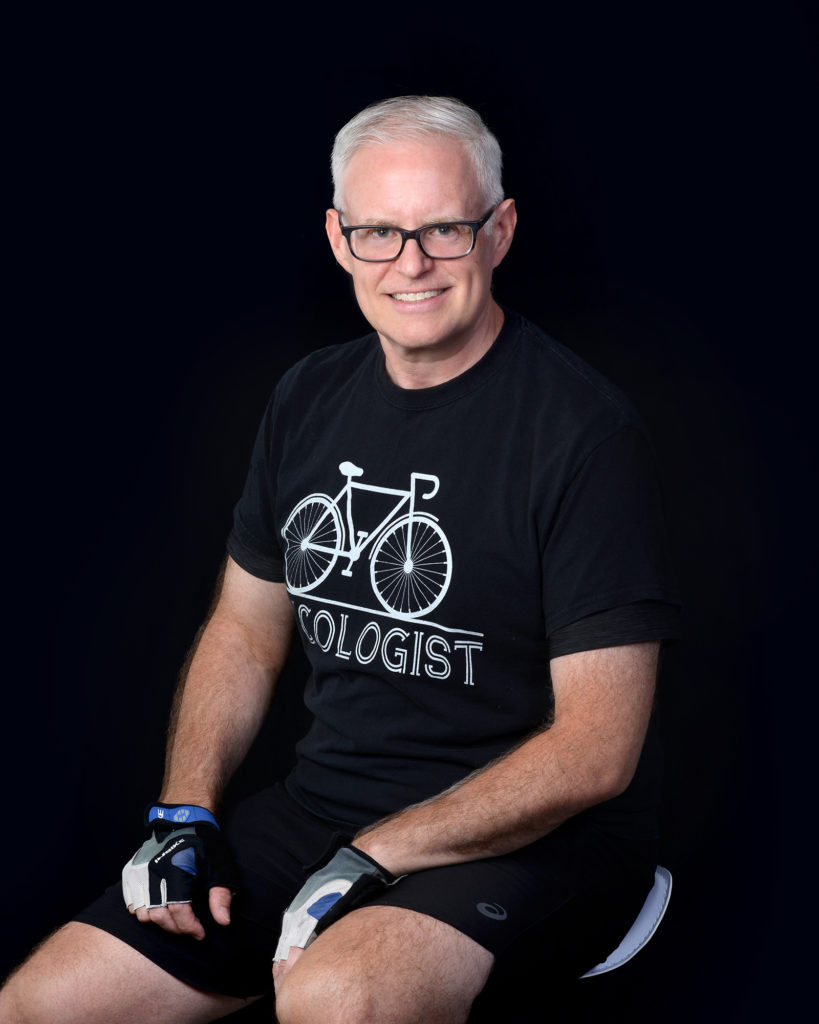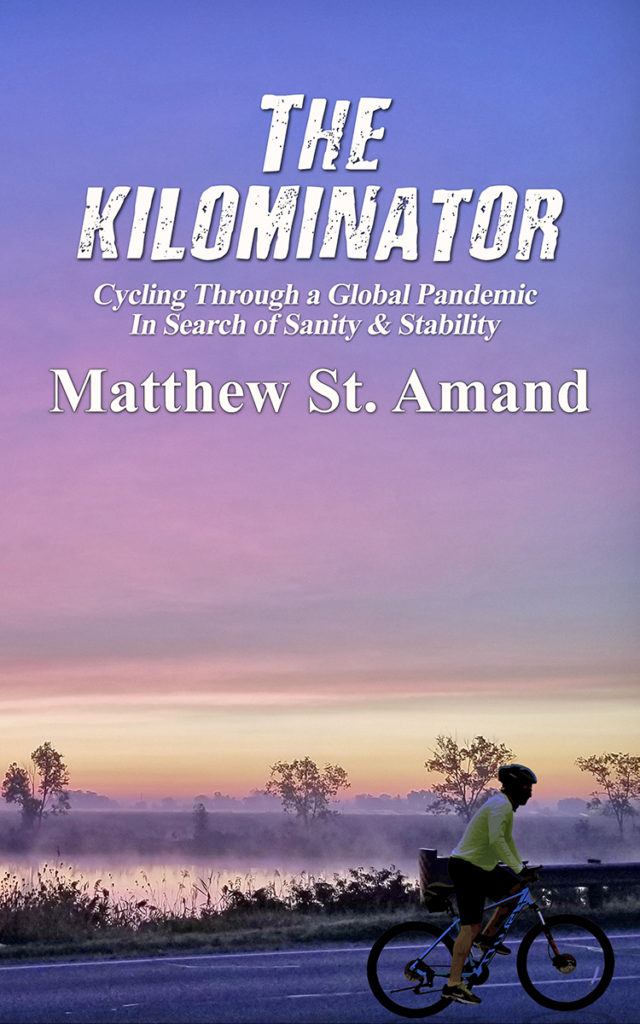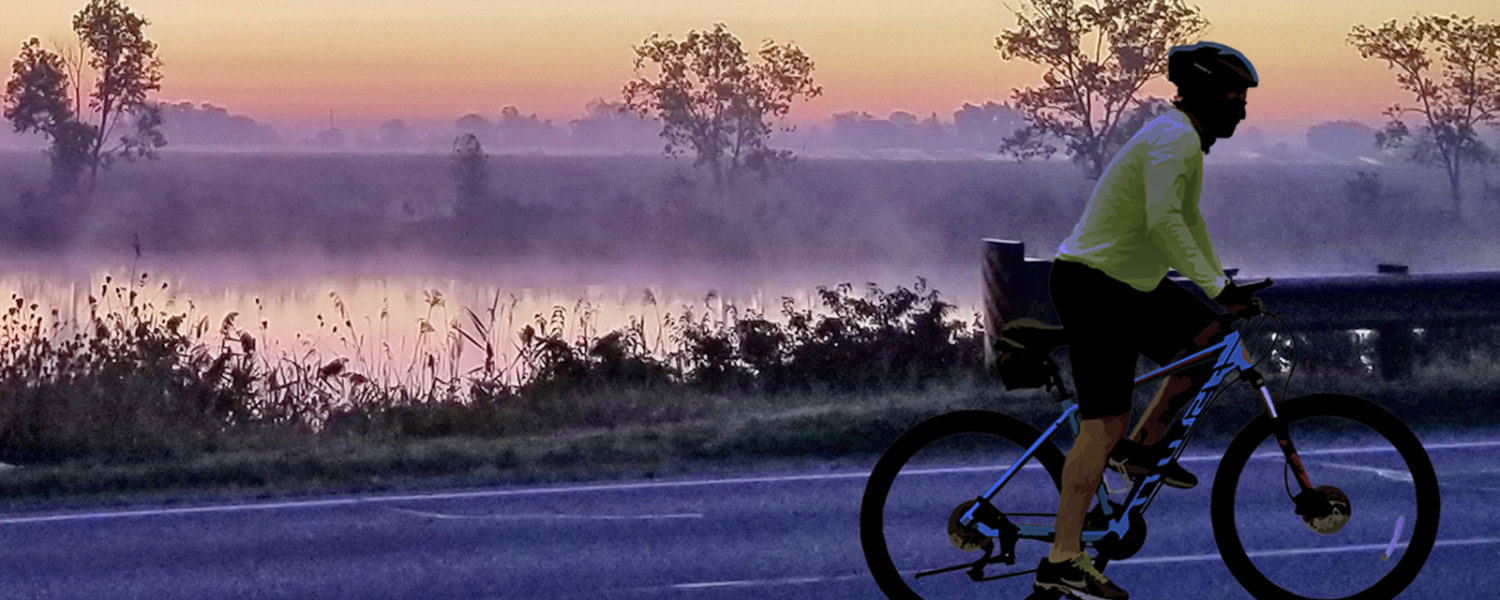How a Local Author Found Solace in Cycling
Story by Matthew St. Amand
Photography by John Liviero
There is a reason why the first words of my cycling book, The Kilominator, are: “Why, exactly, am I doing this?” I’m still trying to figure that out.
Since May 2020, when I started recording my cycling data, I have pedaled 60,000 kilometres around Essex County. The mania remains as much a mystery to me now as it was when I first embarked on this journey.
There was certainly a practical aspect to taking up cycling. Although I was busy collaborating on a book, Gas of Tank, with a friend and neighbour during 2020, the lockdowns of that year opened huge swaths of time. As a person with a natural propensity toward worry, I knew that I had to occupy those empty hours otherwise my anxiety would gnaw me to the bone.

It wasn’t long before the bicycle rides became adventures. Living in LaSalle, I challenged myself, one day, to cycle all the way to my old west Windsor neighbourhood. Such a palpable sense of nostalgia and remembrance unfurled in me during that ride, passing the home on Queen Street where my father was born, where his father died, past Bridge Avenue where my mother was born, along the riverfront where I had spent so much time as a kid. Rolling into Cameron Avenue, by my old grade school, my old home, I had traveled more than physical distance. Time had affected everything. My old school was empty and unused, my old home looked different; inexplicably the fire hydrants had relocated to the opposite side of the street. My memories filled in the gaps, and I caught glimpses of the old faces, heard the old voices, remembering running through sprinklers, as a kid, playing catch on the front lawn and the barely controlled chaos of the old schoolyard.
On another occasion, expanding my exploration, I rode to Walkerville, passing my grandfather’s old house on Lincoln Road. Recalling family folklore, when my mom was twenty years old, in her first job as a social worker, borrowing Grandpa Ted’s car to visit her clients. Grandpa coming home from the Ford foundry one day, saying: “I got you a car.” Mom hurrying excitedly to the garage at the other end of the backyard to see it, heart sinking at the sight of it: a banged-up old wreck with a cracked windshield, missing a few windows, stuffing bursting through holes in the seats. She opened the driver’s side door and found the car had no floor. Evening after evening, Grandpa worked on the car, installed a new floor, mended the seats, replaced the broken and missing windows, repaired and repainted the body, tuned up the engine.
The old garage, the magic laboratory, remains to this day.
Another day, pushing myself to my outer limits, riding to Jefferson Avenue where Grandma St. Amand once lived. She was devoutly religious and so I was surprised when my mom shared a story with me about Grandma reading everyone’s tea leaves following a dinner at our home before I was born. Her prognostications came true. Weeks later when my mom told her, she remembers Grandma seemed surprised, and never read anyone’s tea leaves again.
It was somewhere around that time, months into my riding, that I decided to write a book about the experience—how the kilometres intertwined with time and memory. As I lost weight—trimming down after years of sedentary existence as a cubicle-bound technical writer—I realized that exercise was the seventh or eighth reason why I cycled.
My book, The Kilominator, begins on the morning I rode one of my first metric centuries: 100 kilometres. There was only one destination for it: Emeryville. So, one August morning, when the weather report stated with certainty that a rainstorm was on the way, I embarked to ride clear across the county. The promised storm hit when I was at my halfway point. Soaked to the bone, questioning my ability to make decisions about when to ride, I trudged through the thunderous downpour. I got my first metric century and the first chapter of my book out of that experience.
My exploration of Essex County has been fascinating, and writing about the experience has been as much about explaining it to myself as sharing it with others. In a culture obsessed with exercise and weight loss, longevity and quality of life, it is interesting to realize that I finally found exercise when I wasn’t really looking for it. I cycled for other reasons; exercise was a side benefit.

Three full years and 60,000 kilometres later the mystery and enjoyment of cycling remains. My book is not a how-to manual about riding, but an attempt to explain what I found in cycling. If other people find encouragement in that, wonderful. As a person given to over-analyzing situations, deconstructing jokes until they are no longer funny, I’ve learned not to overthink my cycling. I do not dwell very long on “why?” It is a hobby not unlike building bird houses. Recording my data from each ride, I see my progress, plan rides of varying distances based on how many kilometres I need to get to the next milestone. My cycling app provides an endless procession of milestones. I strive for them all.
Among the best feedback I received about The Kilominator is that a person need not have any interest in cycling to enjoy it.
Another reader commented: “Some books can be a slow burn and you need to be patient with them for a chapter or two. Not the case with The Kilominator. Right from the first few words, you feel drawn in as the author describes his experiences of trying to cycle through a massive storm while stuck out near Puce! The book is immediately engaging.”
The rides, as well as the book, are all about stories.
To learn more about The Kilominator, check out www.kilominator.com. Signed copies of the book are available at Juniper Books and Storyteller Bookstore on Ottawa Street, and River Bookshop in Amherstburg.




Add comment